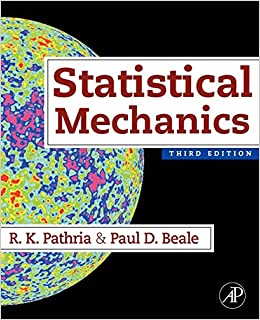Let's go to part (c) right away. Our problem here is to maximize the expression (S /
Question:
Let's go to part (c) right away. Our problem here is to maximize the expression \(S / k=-\sum_{r, s} P_{r, s} \ln P_{r, s}\), subject to the constraints \(\sum_{r, s} P_{r, s}=\) 1, \(\sum_{r, s} E_{s} P_{r, s}=\bar{E}\) and \(\sum_{r, s} N_{r} P_{r, s}=\bar{N}\). Varying \(P\) 's and using the method of Lagrange's undetermined multipliers, we are led to the condition
\[
\sum_{r, s}\left\{-\left(1+\ln P_{r, s}ight)-\gamma-\beta E_{s}-\alpha N_{r}ight\} \delta P_{r, s}=0
\]
In view of the arbitrariness of the \(\delta P^{\prime}\) 's in this expression, we require that
\[
-\left(1+\ln P_{r, s}ight)-\gamma-\beta E_{s}-\alpha N_{r}=0
\]
for all \(r\) and \(s\). It follows that
\[
P_{r, s} \propto \exp \left(-\beta E_{s}-\alpha N_{r}ight) .
\]
The parameters \(\alpha\) and \(\beta\) are to be determined by the given values of \(\bar{N}\) and \(\bar{E}\).
In the absence of the constraint imposed by \(\bar{N}\), the parameter \(\alpha\) does not even figure in the calculation, and we obtain
\[
P_{r} \propto \exp \left(-\beta E_{r}ight)
\]
as desired in part (b). And if the constraint imposed by \(\bar{E}\) is also absent, we obtain
\[
P_{r}=\text { const. }
\]
as desired in part (a).
Step by Step Answer:






